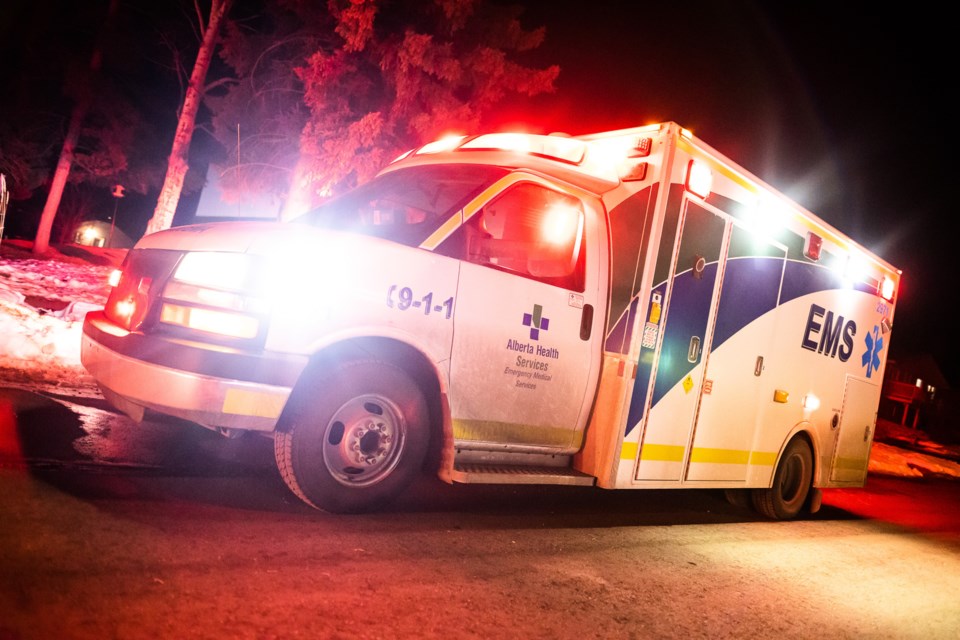Thirty-nine per cent of total calls requesting Okotoks ambulances to leave the community in Alberta Health Service's last fiscal year came from Calgary, said Calgary Zone EMS operations associate executive director Randy Bryska.*
"We are going to acknowledge that in the past we have not had Okotoks resources in community and that's a concern to us.
"In fact, what we're seeing is Okotoks coming into the city and doing calls in the city of Calgary and Calgary resources coming out and we're getting a criss crossing of resources," Bryska told Okotoks council Monday, March 14. "We put a stop to that and have seen very good success in that."
But, just over half (54 per cent) of local calls in that time period were responded to by local EMS.
Okotoks was also served by Calgary, High River and Black Diamond ambulances, 21, seven and six per cent of the time, respectively.
Ambulances from smaller centres being pulled into the city is a significant problem that leaves rural populations more vulnerable.
Mayor Tanya Thorn said this is an issue for municipalities as fire crews have to stay on scene until a transfer can be made between fire and EMS.
She said over the past four months, fire services are held up for two hours on average.
While event volume is a current challenge, so is staff level fluctuation and prolonged hospital waits, Bryska said.
As a mitigation method, a new metro response plan was implemented on Feb. 7, Bryska said.
This method changes the process for ambulance dispatch — resources from Calgary will be sent to Calgary on calls that are determined not time-sensitive.
Since that plan was implemented, he said there has been a significant drop in the number of times local ambulances are pulled into the city.
In the first and second week of adjustments, there was a drop of 24 per cent, followed by 38 per cent the following week. Week four saw a drop of 76 per cent and week five saw a drop of 70 per cent.
Response times are also a concern.
Bryska said the median response time in Okotoks is eight minutes, which is in the 50 percentile, meaning that half of all calls are responded to within eight minutes.**
Reaching a 12-minute response time, considered to be in the 90th percentile, is a concern, due to resources being pulled into different centres.
In the past AHS fiscal year, there were 1,522 calls made to 911 in Okotoks.
Thorn asked that Bryska return for an update to Council in six months time.
*Editor's Note: This has been corrected for clarity purposes.
**A previous version of this story indicated that responses were sitting around the 90th percentile with respect to the 15-minute mark, meaning 90 per cent of total responses take more than 15 minutes. When, in fact, a time in the 90th percentile means 90 per cent of all calls are responded to within that time frame. The Wheel deeply regrets this error.




